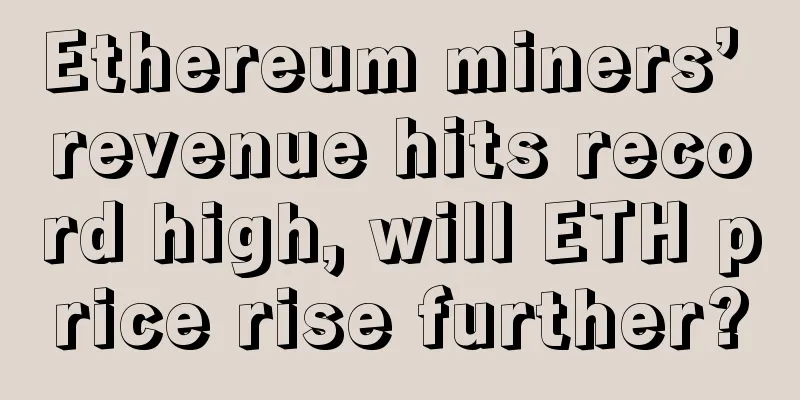Ethereum miners’ revenue hits record high, will ETH price rise further?

|
Ethereum’s price has risen more than 180% since its March 2020 low, but data from the blockchain suggests the world’s second-most popular digital asset may have further to go, Decrypt reported July 31. Data published by blockchain analytics firm Glassnode shows that many metrics on the Ethereum network have surpassed their late 2017 highs, including the amount of gas used in transactions and the revenue from proof-of-work mining that supports the blockchain. Data shows that Ethereum’s current market fundamentals are significantly different from the market fundamentals when Ethereum hit its all-time high of $1,400 two years ago, which makes people believe that Ethereum holders may have more gains in the future. Transaction fees on the Ethereum network are reportedly currently the highest they have ever been. However, data from Glassnode shows that the difficulty and hash rate of the proof-of-work mining activity that secures the Ethereum blockchain has now fallen by nearly 25% since peaking in the summer of 2018. The hash rate of the Ethereum network. Source: Glassnode A lower hash rate means Ethereum miners can process more transactions with the same hardware. Although the amount of newly mined ETH has remained stable since February 2019, the reduction in the overall hash rate means more gas will be paid to miners in Ethereum transactions. As a result, the fee revenue that miners generate from broadcasting transactions to the Ethereum network has exceeded 16% on some days, and even exceeded 19% at one point. In contrast, when ETH’s price peaked in early January 2018, miners’ revenue from fees never exceeded 15%. Miner income on the Ethereum network. Source: Glassnode Notably, infrastructure providers for the Ethereum network are continually profitable due to real activity on the blockchain, especially when compared to previous periods of lost activity and price optimism. Another indicator of Ethereum's growth far beyond its all-time high price period is the total gas usage. Compared with January 2018, the total gas usage of the Ethereum network has nearly doubled, as Ethereum transactions are no longer simple transfers between personal wallets or exchanges, but more complex and expensive operations through the use of smart contracts. Gas usage of the Ethereum network. Source: Glassnode The market has shifted from speculation in decentralized applications to usage in functional applications for lending and earning returns, which is reflected in a significant increase in gas usage. Will the price of ETH follow suit? A lot of things about Ethereum will change with the launch of Ethereum 2.0, a long-awaited network upgrade. This includes the network being able to process more transactions per second and a shift in the way new blocks are generated in the network. Before the full upgrade to Ethereum 2.0, there seems to be a lot of things that make ETH holders optimistic. This article was translated with permission from Decrypt.com Link to this article: https://www.8btc.com/article/629491 |
<<: Iranian government approves Bitcoin mining at power plant
Recommend
Where will a person with a mole have a lifelong worry-free life?
Moles are not only present at birth. For many of o...
What does a mole on a woman's lower lip mean for her fate?
In fact, there are different meanings for moles. ...
What kind of man is loyal?
How can you tell a man’s true nature and goodness...
People with these palm characteristics have an impatient personality and should pay more attention to their interpersonal relationships!
A person's personality can also be seen in hi...
What is cinnabar nevus? Pictures of cinnabar nevus
What is cinnabar nevus? Pictures of cinnabar nevu...
If you see someone you know on the street, you will quickly avoid them.
In daily life, many people will meet familiar peo...
Bitcoin Cash becomes the third largest cryptocurrency, industry leaders have something to say
Following the much-anticipated launch of Bitcoin ...
Canaan Creative is a world leader, but domestically produced CPUs still lag behind. What is the difference between dedicated chips and general-purpose chips?
With annual sales exceeding 1.3 billion yuan, pro...
What does the fork at the end of the wisdom line mean?
In our palm, the wisdom line represents our reaso...
Bloomberg Crypto Report: Why the Bull Run Can Continue?
Original title: Bloomberg Crypto Outlook–Discount...
What impact will the FileCoin mainnet launch brought by the three major platforms? 丨Baidu Blockchain Introduction 279
At 22:44 on October 15, the Filecoin mainnet was ...
Boxing champion Mike Tyson's Bitcoin ATM is not working properly
Mike Tyson is excited about the prospect of joini...
What is the difference between a finger dustpan and a bucket?
If you look closely at your fingerprints, you wil...
Unraveling the legal issues surrounding The DAO
The heated public debate over The DAO project has...
Boost VC has invested $52 million in 52 Bitcoin and blockchain companies
Boost VC, the San Bernardino, California-based in...









